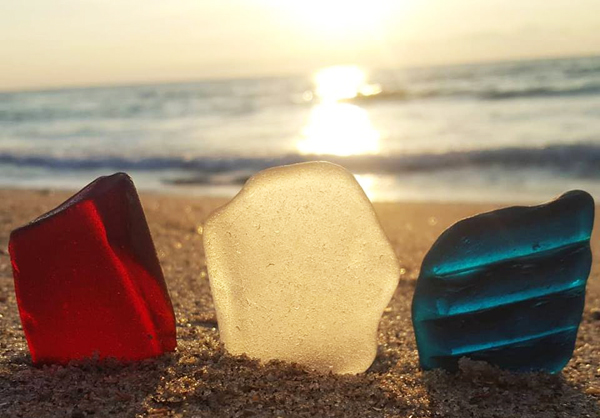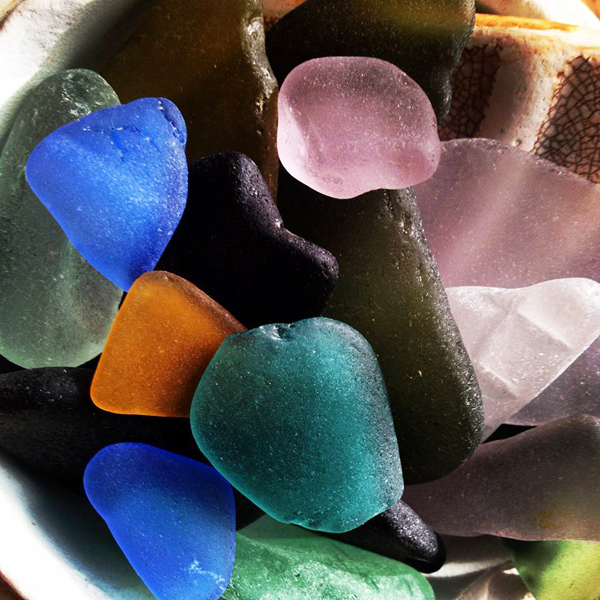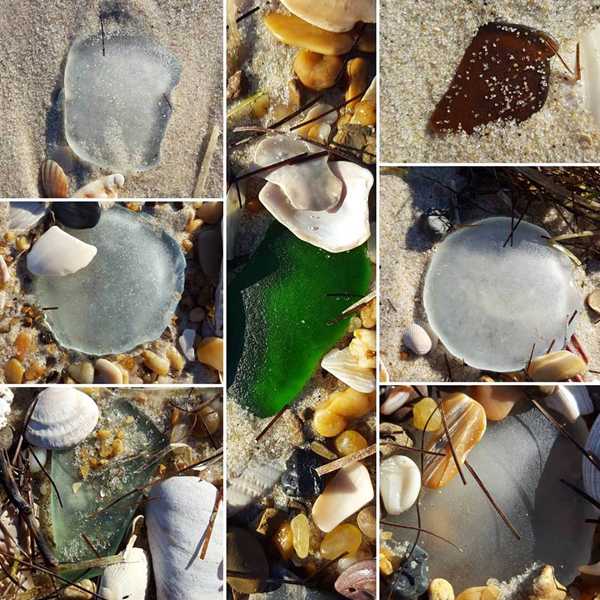A Beachcomber’s View: The Science of Seaglass
June 10, 2019 | Island Features | By: Kristin Hissong

The Outer Banks is home to an array of natural beauty, from the long stretches of wild beaches, to the calming waters of the sound, to all the many varieties of marine life.
People come from all over the world, year after year, to enjoy all the treasures that these miles of sand have to offer, and one of these treasures that is growing in popularity and diminishing in availability is seaglass.
Seaglass is a piece of glass that has become smooth and frosty from being out at sea for an extended period of time, usually more than 25 years. Seaglass is glass that has been chemically altered – naturally – by the intense ph levels of the body of water it has been submerged in over many years. If the ph levels are high, like in the Atlantic Ocean or Great Lakes, then the water will yield collectable pieces. If the ph levels are low, like in most lakes and sounds, then that body of water will yield slick glass, which are sharp shard-like pieces that are not favorable for seaglass collectors.
90% of seaglass pieces come from broken bottles and the other 10% come from decorative items like vases or tableware. On the Outer Banks, the seaglass supply comes mostly from commercial glass containers like Clorox or Listerine, and on rare occasions, one can find a red piece from a boat lens or a teal piece from a telephone insulator.
In the early development of America, ships would carry goods up and down the coast, but the Outer Banks is not know for its smooth sailing, and consequently many ships wrecked causing their goods to be dumped into the Atlantic Ocean. Years later, and unknown to anyone, some of the glass objects turned into beautiful, collectable seaglass.
Storm surges from hurricanes and other storms like nor’esters pound the shores of the Outer Banks annually. Sometimes these surges wash away homes and the contents of these houses ends up in the ocean. Items made out glass from these homes also have the potential to become seaglass. One of my favorite pieces that I donated to the Seaglass Museum was an intact insulator from a GE range from the early 1950s.
The colors of seaglass that can be found depend on the history of the beaches. For example, chunky aqua pieces are frequently found on beaches in Japan because historically they are known for their glass fishing buoys which are famed for their thickness and beautiful aqua blue coloring. The Outer Banks is known for having lots of brown and clear seaglass, because of all of the aforementioned commercial vessels, but it is known for having lots of black glass as well.

Black glass, or “pirate glass,” is glass that looks black, but when held up to the light, its true color is revealed. For the Outer Banks, the pirate glass is usually dark olive green, often with an air bubble stuck inside which indicates that it was made by hand and thus very old. The true pirate glass pieces that are found here could date back to the 1700s, and are usually thicker that all other pieces of seaglass. These are often over looked by beginners because they sometimes look like a black rock.
On rare occasions, black glass can also be a deep amethyst or indigo blue, which typically stems from electrical insulators. Lightbulbs have a tiny glass insulator wrapped in metal at the base of the glass. These insulators can be a deep purple or blue color, and can sometimes be found washed ashore with the bulb intact. Telephone poles used to have glass insulators on them, and they came in a wide variety of colors all which can be found on the Outer Banks. These type of insulators are exciting for collectors because they are usually very thick and often a rare color.
People always ask me where the secret spot is to find seaglass, but truthfully, no one really knows.
The beachcombers I know that collect seaglass go often and they walk slow, picking up everything they come across. Many times I have bent down to pick up a piece of trash only to discover a beautiful piece of seaglass hiding under a shell or a pile of seaweed. Walking slow and thinking about the colors of seaglass I want to find are some of the things I do when I am out seaglass hunting. I also re-walk the areas because seaglass likes to hide between shells and rocks, and even the most experienced collector can walk over pieces that are tucked away.
Have patience, stay happy, and soon enough the seaglass will find you.
